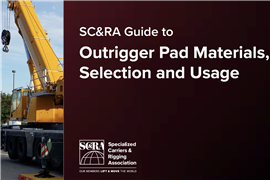Purpose-built workhorses
06 May 2014

In the rush of new machines launched this year to meet new Stage IV and Tier 4 Final emissions standards in Europe, Japan and North America, it is perhaps easy to forget that the majority of the world doesn’t use this equipment. Although they may represent the cutting edge of technology, these machines are too expensive for other markets and inappropriate because they need to be fuelled with ultra low sulphur diesel, which is not widely available outside tightly regulated countries.
But as Caterpillar’s new machines for Africa and the Middle East demonstrate, there is much more to designing equipment for other parts of the world than simply putting in a different engine.
This is best illustrated by the 950 GC wheeled loader, which marks the start of a bold new approach in the way Caterpillar designs equipment for emerging countries. It sits alongside the 950 H – also a machine for lesser regulated markets – in the popular 3 m3 buck class. But whereas the 950 H is built for serious production work, the 950 GC is designed for lighter duties such as re-handling aggregates and other free-flowing materials, and general on-site support work.
Caterpillar’s medium wheeled loader product specialist, Vincent Danloy said, "It is still a premium machine, but for different kinds of applications.”
Hamid Lavassani, sales manager for Caterpillar’s construction and infrastructure products in Europe, Africa and the Middle East (EAME) said, "We have designed this machine specifically for the market. This is not a 950H with some of the technology removed, this is a machine that has been designed for a specific purpose."
He added, "We used to make just one model and sell it to everyone. But depending on what was needed, it might not have been right."
The idea behind the 950 GC is to offer a machine which uses simple and proven technology, which will make it cheaper than the 950 H, and which is easy to operate and maintain. To this end, the controls are a simple pilot system, compared to the 950 H’s elector-hydraulic systems. The 950 GC does however feature load-sensing hydraulics.
"This brings the power when it's needed by the application and it is automatic, so it doesn't need an intervention from the operator," said Mr Lavassani.
As a production machine, the 950 H can be fitted with a slightly larger maximum bucket size than the 950 GC, and some of its rear structures are more robust. However, the 950 GC has a bit more dump clearance to help with truck loading. The front end is a traditional Z-bar linkage, and while Caterpillar says the machine can be used for production work, it is intended more for lighter applications.
Power comes from a 168 kW Cat C7.1 engine, which meets Stage IIIA/Tier 3 emission laws and the company says this has a fuel injection system designed to cope with the poorer quality fuels that are often found in emerging countries. There is an on-demand fan and the robust cooling system means the machine can be used in temperatures up to 50°.
The simple technology theme is apparent in the powertrain, which provides four forward and three reverse speeds via a Caterpillar-built powershift transmission. The axles feature in-board planetary drives and wet disc brakes, and limited-slip differentials are available as an option.
Workhorse excavator
Another machine that Caterpillar has rethought is the 20 tonne class 320D2 tracked excavator. This is by far the most popular excavator size worldwide, particularly in emerging markets, and Caterpillar’s discussions with customers led it to the conclusion that greater simplicity would be the way to improve it.
One of the key aspects of this was to go from an electronic to mechanical engine to help with fuel quality issues. Alex Favero, Caterpillar’s hydraulic excavator product application specialist for EAME said, "For the Middle East and Africa, the quality of fuel is very low. In electronic engines, the pressures is huge - 2,000 bar or so in the injectors, so if you get a blockage you have a huge problem. In a mechanical system, the pressure is only around 200 bar."
This greater tolerance to poor fuel should not only mean greater reliability, but it has also allowed Caterpillar to generate potential savings in consumables. The previous 320D had four fuel filters, with a recommended replacement interval of 250 hours. Now there are just two, and the interval has been stretched out to 500 hours, so this aspect of the machine’s running cost is a quarter of what it was.
Despite the change to a less sophisticated engine, Caterpillar says there is about a 3% fuel efficiency improvement on this machine over the previous model, compared to the last. Another change is the in-cab monitor and new Eco Mode. The machine always starts up in Eco Mode as a default (although owners can change this setting). While the operator can switch to a Power Mode if required, Caterpillar says running in Eco mode will save 10% to 15% in fuel costs.
More to come
These two machines are just part of a new portfolio of equipment Caterpillar is launching in the Middle East and Africa this year. The 320D2 is just one of nine tracked excavators that will be released to cover the 20 to 90 tonne operating weight classes. It is a wide spread of machines, but as Mr Lavassani said, "Excavators are 70% of the market in the region."
In addition, there are two wheeled excavators, to come along with a grader and scraper.



